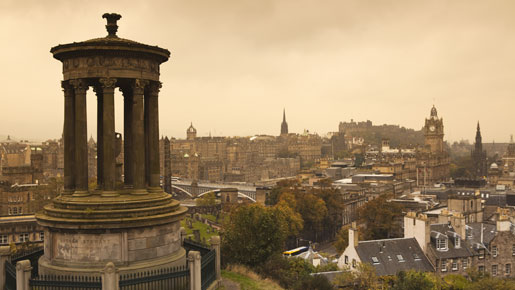
Edinburgh is the home of the Scottish Parliament, the base of two of Europe’s top ten banks – the Royal Bank of Scotland and Halifax Bank of Scotland – and the UK’s second largest financial centre. As the sixth largest fund management centre in Europe, it has overtaken the financial strongholds of Frankfurt, Milan, Zurich and Madrid.
The talented population, around 1.2 million people in the city region, has a long history as innovators. It is no surprise that the telephone and the world’s first cloned animal were invented here. Nowadays, over one third of Edinburgh’s population have a degree-level qualification making the city’s workforce one of the most highly qualified in the UK.
With a modern airport serving 80 destinations worldwide and a tram network under construction, Edinburgh has never been better connected. It is an hour by air to London, but with all the benefits of being a compact green city that workers love. Edinburgh has won more than twelve UK Best City awards in the last seven years.
Labour and commercial property costs are significantly lower than in London and the south-east, with Scotland’s indirect social wage costs, such as employer national insurance, among the lowest in Europe.
Bold and ambitious business developments are springing up across the city region. Already, more FTSE100 companies are based in Edinburgh than any other area of the UK outside London, with key strengths in finance, science and technology and tourism.
Edinburgh’s city centre is home to a string of world-class businesses and The Exchange Financial District, which features a cluster of financial services headquarters. The area has 92,900 sq m of office space and at least 13,000 jobs. Independent analysis ranks Edinburgh ahead of other major UK cities for financial service providers in terms of people, infrastructure, accessibility, real estate, living environment and other factors.
The city centre has also been seeing the transformation of historic buildings into modern flexible office spaces. Waverley Gate, a building which dates back to 1866, was the biggest office redevelopment of its kind in Europe last year. It forms part of the 650,000 square metres of available office space in the wider city region. Microsoft has recently been confirmed as the first tenant in the building, demonstrating their confidence in the city. In the Old Town district, the Caltongate project will see new space for offices, a hotel and conference facilities.
The main city centre shopping thoroughfare, Princes Street, is also preparing for an unprecedented programme of redevelopment. It has been divided into eight blocks, each interconnected and with its own identity – for example, entertainment, shopping or residential. New buildings are envisaged in the next five to six years.
To the south of the city, the Edinburgh Science Triangle is home to seven dedicated science parks, with more than 14,500 employees working in commercial research and development. At the heart is the Edinburgh BioQuarter. Already the UK’s largest life sciences real estate development, it will position the city region as one of the world’s top-ten centres for biomedical commercialisation.
Other science parks in the area include the Edinburgh Bioscience Research Centre (EBRC), Roslin Institute, Moredun Research Institute, Edinburgh Technopole and Heriot-Watt Research Park.
Edinburgh city region’s scientific facilities also include HECToR – Britain’s most powerful supercomputer – which will allow scientists across the UK to generate complex computational simulations, furthering research in areas such as aeronautics, material science, particle physics, cosmology, nanoscience and disaster simulation.
For further information:
www.investinedinburgh.com

